Posted by Elena del Valle on September 24, 2010
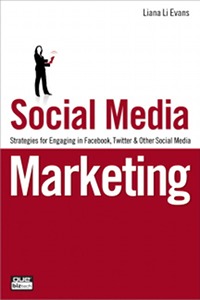
Social Media Marketing book cover
Photos: Que Publishing
Although a recent IBM survey of 1,000 channel partners (see IBM Offers Channel Partners Guidance in Social Media Marketing by Rick Whiting, CRN.com) indicates that 45 percent of respondents said they are trying their luck with social media 74 percent of respondents said they seek more education and better understanding of the many social media outlets and tools like RSS, wikis, Facebook and Twitter. At the same time they said they sought ways to measure results. That mirrors in some ways what Liana “Li” Evans, a social media executive, says.
Social media is not easy, quick and cheap, says Evans in her recently published book Social Media Marketing: Strategies for Engaging in Facebook, Twitter & Other Social Media (Que Publishing, $24.99). Evans, director, Social media for Serengeti Communications, explains that although adding content to social media is quick and free making the added content worthwhile for the audience requires much work.
Often overnight successes are by accident rather than the result of planned efforts. Those who believe launching a page on a popular site is all that is required in social media marketing will likely find disappointment, according to the author.
Social media is about gaining trust which takes time, she says in the first chapter. She goes on to explain that social media is about having conversations and sharing experiences with others with common interests; and that conversation about a company can take place with or without that company’s participation. Successful marketing on social media, as any other type of marketing, requires that the executives understand the social media forum and develop a company strategy that includes an audience profile, goals and measurement, according to Evans.
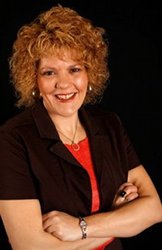
Author Liana “Li” Evans
The 342-page softcover book is divided into five parts with several chapters each: The Basics of Social Media, It’s About Conversation, Social Media from the Inside Out, It’s Not About You, and How Social Media Fits into the Online Marketing Picture.
Since 1999 Evans, who has college degrees in public relations and information technology, has been active in social media and search marketing. Before working with Serengeti, she led search engine optimization efforts for an Internet Retailer 500 company. She also led the online efforts of the entertainment website of a Fortune 500 company.

Click here to buy Social Media Marketing
Comments:
Filed Under: Books
Posted by Elena del Valle on September 17, 2010
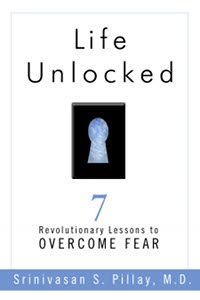
Life Unlocked book cover
Photo: Glenn Kulbako
Srini Pillay, MD, executive coach and chief executive officer of NeuroBusiness (NBG), a company that offers coaching services, believes the primitive part of our brain is constantly sending us messages of alert to warn us about possible danger in our environment. These messages, the rip current of human nature as he describes it, create a sense of anxiety that can prevent us from moving in the direction we truly want.
Being aware of these potential dangers and overcoming the fear they provoke may allow us to function more effectively than heeding the danger signals. In his recently published book Life Unlocked 7 Revolutionary Lessons to Overcome Fear (Rodale Books, $25.99) he talks about how to overcome fears to live better and more fulfilling lives.
The 294-page hardcover book is divided into seven chapters: What you don’t know can hurt you; The science of overcoming dread; Fear of success; If it’s hard to change, it’s not unchangeable; Unlocking a caged heart; Fear and prejudice; and How to develop emotional superglue.
He begins by exploring the idea that everyone suffers from fear of some kind. He then proposes that it is possible to shift the way we view things in order to feel less fearful and anxious. He discusses the fear of success and eight possible causes: loneliness, disorientation, responsibility, the unknown, being unable to maintain success, losing our drive, becoming prey, and losing our identity.

Author Srini Pillay, MD
He goes on to discuss the idea that fear can be the result of conditioning. Once we understand how we are conditioned, he says, we can begin to change our conditioning. He also discusses attachment related fears and his belief that as with other fears, we can change them once we understand them. Prejudice and fear and closely linked, he says.
In Chapter 6, he explains that prejudice may indicate guilt and fear and that finding a productive way to address these feelings may lead to a solution and improve our ability to be successful. In the final chapter he examines the impact that trauma has in our lives and proposes a way to overcome its damage.
In addition to his work as a Certified Master Coach, the author is an assistant clinical professor of psychiatry at Harvard Medical School. This is his first book.
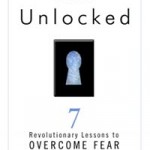
Click here to buy Life Unlocked
Comments:
Filed Under: Books
Posted by Elena del Valle on September 13, 2010
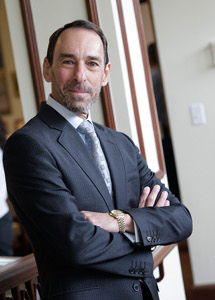
Jose Azel, Ph.D., author, Mañana in Cuba
Photo: Jose Azel, Ph.D.
A podcast interview with Jose Azel, Ph.D., author, Manana in Cuba (see University of Miami scholar discusses possible Cuba future) is available in the Podcast Section of Hispanic Marketing & Public Relations, HispanicMPR.com. During the podcast, José discusses his recently published book with Elena del Valle, host of the HispanicMPR.com podcast.
José is dedicated to the in-depth analysis of Cuba’s economic, social, and political state, with special interest in post-Castro-Cuba strategies. He is a senior scholar at the Institute for Cuban and Cuban-American Studies (ICCAS) at the University of Miami.
A native of Cuba he left the island in 1961 when he was 13 years old as part of Operation Pedro Pan, a child refugee program. He has been a guest on programs on Mega TV, PBS, America TeVe, GenTV, France 24 TV, and Al Jazeera among others.
José is dedicated to the in-depth analysis of Cuba’s economic, social, and political state, with special interest in post-Castro-Cuba strategies. He is a senior scholar at the Institute for Cuban and Cuban-American Studies (ICCAS) at the University of Miami.
To listen to the interview, scroll down until you see “Podcast” on the right hand side, then select “HMPR Jose Azel, Ph.D.” click on the play button below or download the MP3 file to your iPod or MP3 player to listen on the go, in your car or at home. To download it, click on the arrow of the recording you wish to copy and save it to disk. The podcast will remain listed in the September 2010 section of the podcast archive.

Click here to buy Mañana In Cuba
Posted by Elena del Valle on September 10, 2010
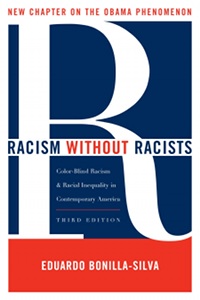
Racism without Racists book cover
Photos: Rowman & Littlefield Publishers, Inc.
In the first edition of Racism without Racists Color-Blind Racism and Racial Inequality in Contemporary America (Rowman and Littlefield) Eduardo Bonilla-Silva, Ph.D., professor of sociology at Duke University, shared his concerns about what he describes as “the new racial ideology,” how he believes the new system has replaced the old system and is as effective. In the second edition of the book, he expanded on the issue by addressing his views of a growing fissure of race stratification similar to the one he believes exists in Latin America’s pluralistic societies.
In the third edition of the book, published earlier this year, he added a section about what he calls the Obama Phenomenon. He also discusses conservative minorities that make their living (or their fortune) defending what some consider views unfavorable to the minority group or groups they should identify with because of their race and cultural background.
The 301-page softcover book is divided into 10 chapters: The Strange Enigma of Race in Contemporary America, The Central Frames of Color-Blind Racism, The Style of Color Blindness: How to Talk Nasty About Minorities without Sounding Racist, “I Didn’t Get That Job Because of a Black Man”: Color Blind Racism’s Racial Stories, Peeking Inside the (White) House of Color Blindness: The Significance of Whites’ Segregation, Are All Whites Refined Archie Bunkers? An Examination of White Racial Progressives, Are Blacks Color Blind, Too?, E Pluribus Unum or The Same Old Perfume in a New Bottle? On the Future of Racial Stratification in the United States, Will Racism Disappear in Obamerica? The Sweet (but Deadly) Enchantment of Color Blindness in Black Face, and Conclusion: “The (Color-Blind) Emperor Has No Clothes:” Exposing the Whitness of Color Blindness.
One chapter from the previous edition, Chapter 10, the appendix with the interview schedule for the 1998 DAS and the postscript for the text were removed. They are available on the publisher’s website, according to the author’s Preface.
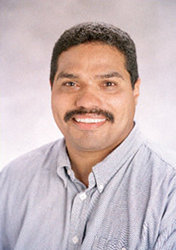
Author Eduardo Bonilla-Silva
Bonilla-Silva believes President Barack Obama and his regime represent the “new racism” and that his policies represent the color-blind ideology he outlines in his book. In addition, Bonilla-Silva outlines his belief in the book in the idea that the President’s policies and the way others are framing his government may further precipitate what the author sees as the country’s Latin America like racial stratification.
In addition to this book Bonilla-Silva is the author or co-author of White Supremacy and Racism in the Post Civil Rights Era, White Out, and White Logic White Methods: Racism and Methodology. His next book is titled The Invisible Weight of Whiteness: The Racial Grammar of Everyday Life in the U.S.A.

Click here to buy Racism without Racists
Comments:
Filed Under: Books
Posted by Elena del Valle on September 3, 2010
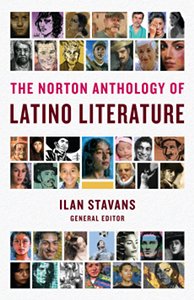
The Norton Anthology of Latino Literature
Photo: Sam Masinter
A compendium of the Latino literary tradition, The Norton Anthology of Latino Literature (W. W. Norton; $59.95) is due to be published in hardcover September 13, 2010. The heavy hardcover book has 2,489 pages plus 177 appendix pages. The book features the work of 201 Latino writers from Chicano, Cuban-American, Puerto Rican, and Dominican-American traditions, and writing from other Spanish-speaking countries. Works from writers of Brazil, Portugal and the Philippines were excluded.
Ilan Stavans, a cultural critic and Lewis Sebring Professor of Latin American and Latino Culture at Amherst College, was the general editor of the title which traces five centuries of writing, from letters to the Spanish crown by sixteenth-century conquistadors to the expressions of twenty-first-century cartoonists and artists of reggaeton. It took 13 years to gather the information and make the book a reality.
The book is divided into six chronological sections: Colonization, Annexation, Acculturation, Upheaval, Into the Mainstream, and Popular Tradition and includes samples of the work of José Martí, William Carlos Williams, Julia Alvarez, Oscar Hijuelos, Cristina García, Piri Thomas, Esmeralda Santiago, and Junot Díaz. Three appendices, Chronology-Literature and History; Treaties, Acts and Propositions; and Influential Essays by Latin American Writers precede a Selected Biography section.
The selection was based on four thematic emphases: identifying Latinos for purposes of the book as those writers from Spanish speaking countries living in the United States regardless of the length of time they resided in the country or their race while taking into account that the events and circumstances of more than one nation may have influenced some of the authors.

Ilan Stavans, general editor, The Norton Anthology of Latino Literature
Mexico City born Stavans, a writer and public television host, authored Growing Up Latino and Spanglish. He lives in Amherst, Massachusetts. Other editors listed at the beginning of the book are: Edna Acosta-Belén, a Distinguished Professor of Latin American, Caribbean, and U.S. Latino Studies and Women’s Studies, University of Albany, State University of New York; Harold Augenbraum, executive director, National Book Foundation; María Herrera-Sobek, associate vice chancellor for Diversity, Equity and Academic Policy and professor in the Department of Chicana and Chino Studies, University of California, Santa Barbara; Rolando Hinojosa, Ellen Clayton Garwood Professor of Creative Writing, University of Texas at Austin; and Gustavo Pérez Firmat, David Feinson Professor of Humanities, Columbia University.

Click here to buy The Norton Anthology of Latino Literature
Comments:
Filed Under: Books
Posted by Elena del Valle on August 27, 2010
By Marga Fournier-Padró
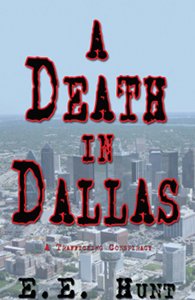
A Death in Dallas book cover
Photos: Ascot Media Group, Inc.
In A Death in Dallas (Publish America, $24.95), a 239-page novel, Ernest E. Hunt addresses the subject of human slavery and drug trafficking, an issue that has existed almost since the beginning of time. Greediness, hunger for power and the weaknesses of many who fall prey to such crimes, leads to exploitation and human slavery. Much has been written and showcased in film about this subject of sex, rape, revenge, crime, drugs and human trafficking.
In A Death in Dallas a young Mexican schoolgirl is kidnapped, along with other students, from a border town in Mexico and smuggled into the United States by degenerates from both sides of the border. Smugglers from other countries down south use the same Mexican routes to take advantage of existing routes and corruption, deriving huge profits from exchanging girls and women for sex, especially the very young. There is also the added attraction and very profitable business of narcotic drugs.
The murder of a man on a street in Dallas left a mystery, a why. Someone phoned the police department to report a crime. When the police arrived they found a body but no witness. Was the deceased placed there to attract someone to shoot at? Did the sniper mean to shoot a policeman who came to investigate the death or simply to scare someone? Did it have anything to do with the kidnapping of the young Mexican girl? The mystery led authorities to discover a smuggling ring of humans and drugs.
The author brings together characters whose life mishaps produce enough adrenaline to cause a reaction between characters and allows them to understand each other’s pain. For some, their own internal crucifixion pushes them in favor of vengeance. For others, justice, duty or anger brings them together to fight and find ways to stop so much hurt and abuse.
The Iraq War leaves a soldier’s face and soul scarred. Mexplotations leaves a group of young girls terrified and scarred because of horrific abuses. The greed for power among members of a well known family who have lost their values and ethics makes some of them indulge in the worst kind of vices for the sake of money to buy their way to congress and for devious fun.

Author Ernest E. Hunt
An Iraq war hero’s somber thoughts make him perform a sniper act that eventually changes his life. The hero meets the heroine in a brothel and together they part in search of justice. The innocence and intelligence of the very young abused heroine draws more characters and drama into the story.
The members of a religious congregation, detectives, police from both sides of the border and even an employee distraught by the meanness of her employer join forces to uncover the source of the sex-drug ring and to entrap those involved, lifting a veil of scandal and corruption.
Although the author explains the horror of human degradation lived by Juanita Delgato, he only touches the tip of a slavery iceberg. In real life, outside of inner vice circles and advocates who fight for these victims, people don’t have the slightest idea of the horror stories lived by children involved in this human racket, be it in Nuevo Laredo, Juárez, Cancún in Mexico or in any city in the United States; activities that should be stopped and penalized everywhere and by all nations.
Fortunately, clean and pure love sprouts among some of the characters to overpower their own sad family love stories. The author’s search for factual sources enhances and adds substance to the book. Some could call it a thriller; however, it is a description of a very sad reality being lived every minute somewhere in the world. Nevertheless, the subtle way, language and sources of justice used by Hunt to vindicate much sorrow in some of the characters involved makes this story worth reading. His descriptive power made me feel like I was traveling along with each character, admiring or disliking the scenery and the story evolution.
According to his biography, Hunt was ordained in the Episcopal Church at Stanford University and was rector of the Church of the Epiphany in Manhattan for 16 years. He spent four years in Saint Matthews and 11 years in Paris, France.
There is no doubt that the author´s background influenced this fictional story, as he describes it, with the credibility of human violations happening every second all over the world. He was able to capture the essence of the problem, ending the story in a language that does not offend, one that can be read by students to open their eyes and make them aware of predators and people with few scruples.
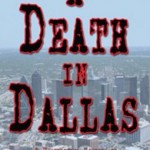
Click here to buy A Death in Dallas
Comments:
Filed Under: Books
Posted by Elena del Valle on August 20, 2010

The Secret Side of Anger
Placing blame on others for our actions and feelings is a common misconception of where the blame should really be, according to Janet Pfeiffer, author, The Secret Side of Anger (Tate Publishing and Enterprises, LLC, $12.99). She believes that taking responsibility for our own feelings and how we deal with them is empowering and the best approach and that finding inner peace is the ultimate goal.
“Most of us believe that other people or situations have the ability to make us angry. This is a big misconception,” said Pfeiffer. In her book she shares the wisdom about anger she has acquired over the years through personal situations and professional experiences coaching others.
Mixed in with jokes, personal and professional anecdotes and occasional references to God, Pfeiffer presents readers with tips on reducing anger that she says have made her personal and professional life better. In the 190-page book Pfeiffer explains that: thoughts lead to feelings and feelings are our choice; it is up to each person to choose the thoughts and feelings he or she has and how to deal with them; and it is up to each individual to take responsibility for his or her life.
“No individual or event has the power to make you mad. Anger is actually a choice, one that occurs depending on that person’s perception (thought). What we choose to think about an experience we’re having or the person we’re involved with determines how we feel. For instance, if someone criticizes you, you can think ‘She’s so mean!’ Or, you can choose, ‘How unfortunate someone could be so insensitive.’ The former evokes anger, the latter, sadness. The truth behind her actions matters little. You only need to concern yourself with how you choose to perceive her and allow her behavior to affect you.”
Pfeiffer, described in promotional materials as a certified violence counselor and motivational speaker, believes unresolved anger leads to resentment and bitterness and can damage a person’s relationships, health, career, and happiness. She is convinced that feeling anger is not in and of itself bad. What’s important is how people handle the feeling and what they do about it, she says in the book.
She believes that only if mishandled in a destructive or violent way does anger turn negative. She asserts that anger is an important and useful emotion that people can take advantage of to change their lives. An example of positive results that may follow anger is when someone witnesses an injustice in society which fuels his or her anger and eventually leads to the creation of new laws.
Anger, by definition, she says, is a feeling of distress born of feelings of helplessness or powerlessness. When people feel victimized it is because they feel others are controlling them but in reality power and control come from within. Regaining our personal power eliminates feelings of helplessness and anger. Others no longer have the ability to push our buttons and make us mad, she says.
Her tips on reducing anger include: Put everything into perspective. Ask yourself if the situation is worth getting upset about. If not, let it go. If it is important, identify what needs to change and create a plan to accomplish that. Switch your focus (thought) from the problem (negative) to the solution (positive). The moment you feel anger well up inside you, remember SWaT: Stop, Walk and Talk. Stop what you are doing. This prevents the situation from escalating. Next, Walk away. Creating distance allows you to calm down and cool off. “Out of sight, out of mind.”
Third: Talk yourself calm. Discuss your feelings and situation with a neutral party, seeking deeper understanding and guidance. If no one is available, talk to yourself. Repeat calming statements such as “I am fine. I am calm. I can handle this is an intelligent and rational manner.” Create a “Peace Plan”: daily activities to engage in that will naturally reduce your levels of anger. Each of these naturally replaces stress and anger with feelings of peace and serenity. Even a simple act such as deep breathing or smiling will help alleviate anger, she believes.
Pfeiffer, president and chief executive officer, Pfeiffer Power Seminars, LLC, is a motivational speaker, an instructor at a battered women’s shelter, personal coach, columnist, and founder of The Antidote to Anger support group.
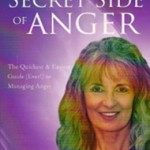
Click here to buy The Secret Side of Anger
Comments:
Filed Under: Books
Posted by Elena del Valle on August 13, 2010
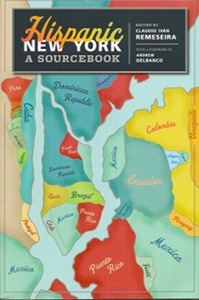
Hispanic New York A Sourcebook
In June, Columbia University Press published Hispanic New York A Sourcebook (Columbia University Press, $29.95), a book edited by Claudio Iván Remeseira, founder and director of the Hispanic New York Project which is hosted by Columbia University’s American Studies Program, about the Hispanic history of the city and its Latino communities. It may also be published in Spanish by a Latin American publishing company.
The book was designed as an anthology of scholarly, literary, autobiographical, and journalistic writings for high school and college students and based on a seminar taught by the editor and Roosevelt Montás, a colleague at Columbia University. It was meant to be a companion book to Hispanic New York: A Cultural Guide, a title that is still under production.
In addition to Remeseira the 547-page softcover book is the work of fourteen men and nine women: Jack Agueros, Theodore S. Beardsley Jr., Paul Berman, Dionisio Cañas, Ruby Danta, Margarite Fernández Olmos, Frank M. Figueroa, Gabriel Haslip-Viera, Carmen Dolores Hernández, Orlando José Hernández, José Marti, Ed Morales, Antonio Muñoz Molina, Frances Negrón-Muntaner, Lizabeth Paravisini-Gebert, Luis Pérez-Oramas, Milagros Ricourt, Clara Rodriguez, Virginia Sánchez Korrol, Roberto Suro, Bernardo Vega, Walt Whitman, and Ana Cecilia Zentella.
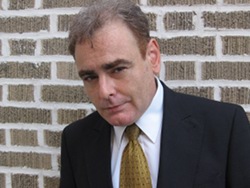
Claudio Iván Remeseira, editor, Hispanic New York A Sourcebook
“Since the moment I had the idea of producing this book to the moment it reached the bookstores, it was almost three years. But I started collecting the material that eventually made up the book around 2001. So you can safely say that the book took almost a decade in the making, and the last three years of that period to come into fruition,” said Remeseira by email when asked how many years the project required.
The book is divided into two main sections, People and Communities and Cultural Hybridizations, and 23 chapters: Introduction, The Evolution of the Latino Community in New York, A Vindication of Cuba, Memoirs of Bernardo Vega, Halfway to Dick and Jane, New York Teetering on the Heights, The Hispanic Impact Upon the United States, In Search of Latinas in U.S. History, 1540-1970s, The Spanish Element in Our Nationality, Racial Themes in the Literature, The Emergence of Latino Panethnicity, Creole Religions of the Caribbean, New York City Center and Transit Point for Hispanic Cultural Nomadism, Puerto Rican Voices in English, Spanish in New York, Spanish in New York a Moving Landscape, New York’s Latin Music Landmarks, The Story of Nuyorican Salsa, Mariachi Reverie, The Art of Babel in the Americas, The Life and Passion of Jean-Michel Basquiat, A Splendid Outsider, and Carlos Gardel in New York.
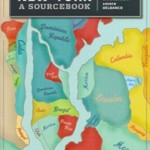
Click here to buy Hispanic New York: A Sourcebook
Comments:
Filed Under: Books
Posted by Elena del Valle on August 6, 2010

Facebook Marketing: Designing Your Next Marketing Campaign
Photos: Que Publishing
In July 2010 Facebook announced it has 500 million users (although on another page of the Facebook website the company’s own description listed the day of this writing 400 million users who have returned to the site in the last 30 days). Founded in February 2004, Facebook is described in the About Facebook heading of the Press section of the company website as “a social utility that helps people communicate more efficiently with their friends, family and coworkers. The company develops technologies that facilitate the sharing of information through the social graph, the digital mapping of people’s real-world social connections. Anyone can sign up for Facebook and interact with the people they know in a trusted environment.”
The Statistics page of the Press section of the Palo Alto, California based company indicates 70 percent of its users are outside the United States. At the same time it seems to be popular with big companies: Two-thirds of comScore’s Top 100 websites in the United States and half of comScore’s Global Top 100 websites have integrated with Facebook, according to the data on that same page.
Perhaps as a result it seems everybody is thinking about, wants to, or has a business page on Facebook although curiously in the company’s own description the utility is for “friends, family and coworkers.” At the same time whether for personal, business or combination profiles there have been a number of concerns over the life of the website and especially recently about privacy and the company’s efforts to bank on member data to make a profit.
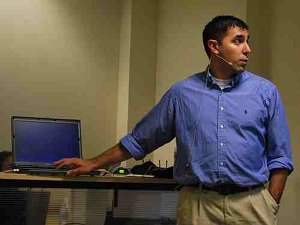
Author Justin Levy
Earlier this year Facebook changed its default privacy settings to allow third-party partner websites described as partners to access information from user profiles whenever they wanted to unless users went back to their profiles after the new policy was announced to block that use. Millions of users were said to have complained and as many as 25 million were thought to have closed their accounts in protest before the company responded.
As director of Business Development, Marketing and Client Relations at New Marketing Labs Justin Levy makes his living with Facebook, in part. The company he works for offers consulting services to middle and large sized companies that want to leverage their social media presence. According to his bio, his clients include Sony, Microsoft, Citrix Online, SAS, and Molson Coors. Earlier this year, he published the second edition of Facebook Marketing: Designing Your Next Marketing Campaign (Pearson Education, Inc., $24.99).
In the 195-page softcover book he discusses his thoughts on Facebook as a social media business tool. He addresses establishing a presence, creating ads on Facebook, privacy, using Facebook Connect and Live Stream Box to reach potential customers outside Facebook, reputation monitoring, widgets and apps, and sweepstakes to build traffic.
The book is divided into 11 chapters: From Dorm room to Boardroom: The Growth of Social Networks, Getting Around Facebook: The Basics, Establishing a Corporate Presence, Extending Facebook into the Interwebs: The Power and Reach of Facebook Connect, Facebook Advertising: How and Why You Should Be Using It, Extending the Experience with Facebook Apps, Addressing Privacy Concerns, Developing a Facebook Marketing Strategy, Using Facebook to Develop Communities, Best in Class, Shaking the Crystal Ball: What’s Next for Facebook.

Click here to buy Facebook Marketing
Comments:
Filed Under: Books
Posted by Elena del Valle on July 30, 2010

Playing the Lying Game
Photo: Gini Graham Scott, J.D., Ph.D.
Even though as individuals and members of society we frown on lying everybody lies, even animals. It is in our DNA to lie as a way to enhance our likelihood of surviving and thriving in a competitive environment, according to experts on lying. Not everyone lies as much as others, for the same reasons or to the same type people in their lives. How someone lies, to whom, why and how often are some of the distinguishing characteristics in the lying spectrum. Even the definition of a lie varies.
Many people may disagree about the definition of a lie. Is it a lie, for example, to use a marketing photo in a hotel brochure that makes a hotel look better than it does in real life? To rearrange furniture for the photo shoot in a way that shows only the prettiest side of a room? Is it a lie when someone doesn’t share all that he or she knows about something? In other words, when it comes to lying is omitting information the same as actually saying something the speaker knows not to be the truth?
In Playing the Lying Game Detecting and Dealing with Lies and Liars from Occasional Fibbers to Frequent Fabricators (Praeger, $44.95) Gini Graham Scott, J.D., Ph.D. explores lying, its history, motivations, the types of lies and liars and to whom they are told, and issues to consider when deciding whether to confront a liar. She also includes a simple lying self assessment questionnaire.

Author Gini Graham Scott, J.D., Ph.D.
The 211-page hardcover book published this year is divided into 14 chapters in four sections: Why Do We All Lie?, Identifying the Different Types of Liars, Lying in Public and Professional Life and Lying in Personal and Private Life. In the last chapter, Conclusion, the author suggests people are more likely to be comfortable interacting with others who have similar beliefs and attitudes about lying; she also addresses confronting a lie, confessing, getting caught, forgiveness and dealing with lies.
According to her biography, Graham Scott is a consultant and college instructor who has authored more than 50 books.

Click here to buy Playing the Lying Game
Comments:
Filed Under: Books





































